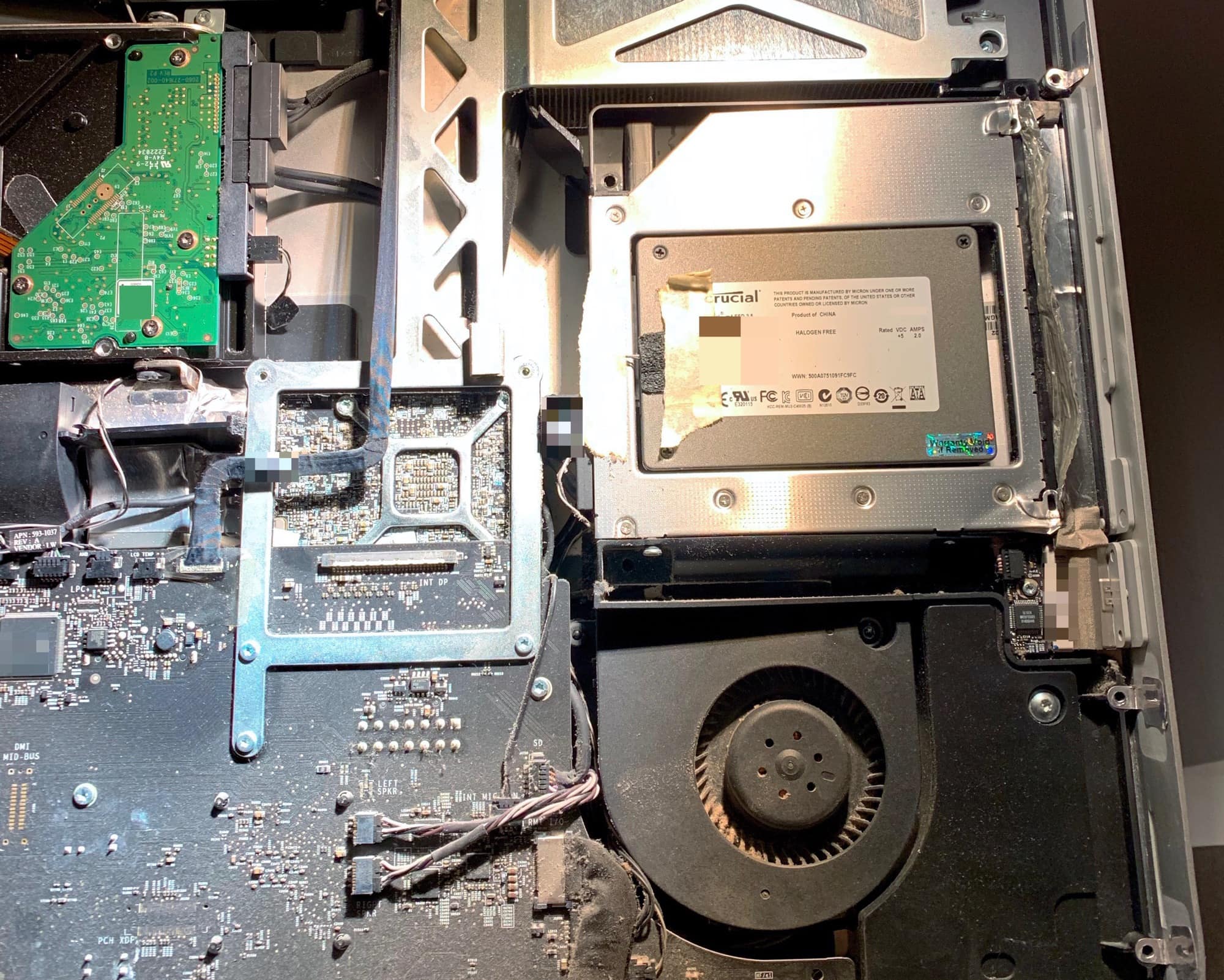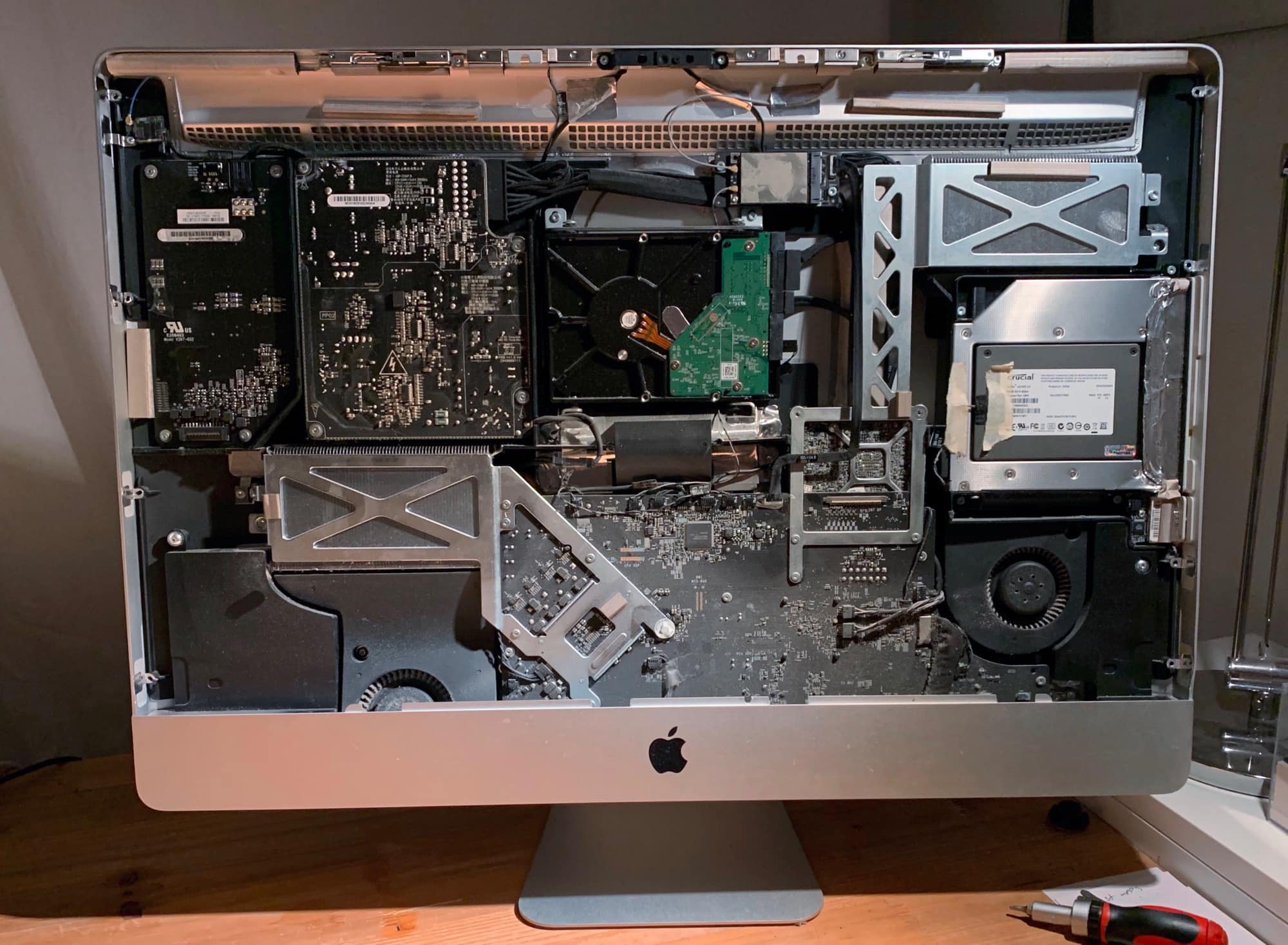Yesterday, I wrote about the massive conceptual difference between Mac and iPad, and mentioned that I still use a 2010 iMac. Today, I thought I’d explain how I managed to keep it going for so long.
Spoiler: It was pretty easy, although it required some simple home surgery from time to time. The only sad part is that the current lineup of iMacs almost certainly won’t last as long, at least not without professional attention.
Here’s how I kept my Mac running for a decade.
This post contains affiliate links. Cult of Mac may earn a commission when you use our links to buy items.
The George Clooney of Macs
My iMac is a Core i3 model from 2010. It came with a DVD/CD drive, a hard drive (1TB, unless I later added the 1TB drive and don’t remember), plus 4GB RAM. Today it runs macOS High Sierra, and is incompatible with Mojave and the upcoming Catalina.
But other than this OS limit, which is far less crippling on the Mac than on iOS, my computer is still going strong. It can run Apple’s Logic Pro X music software without a hiccup (although not with 1,000 audio tracks, like the upcoming Mac Pro can). And it still feels as snappy as the day I bought it. Or, actually, it feels snappier, thanks to the mods I’ve done over the years.
My iMac upgrades and repairs
Technically, I’ve owned this iMac for nine years, so I’m rounding up. And I see no reason that my Mac won’t keep going for a while. But things do go wrong during a decade of life. Hard drives (and even SSDs) die, RAM goes bad, and CDs/DVDs become obsolete. So, here’s a list of the maintenance and upgrades I’ve done over the years.

Photo: Charlie Sorrel/Cult of Mac
The first thing I did was to add more RAM. In those days, Apple’s RAM prices were outrageous. I bought an extra 8GB (two x 4GB) from Crucial. Back then, that cost me 246 euros, or $275. Upgrading to the maximum 16GB would have meant removing the factory RAM modules and swapping in another 2x4GB pair. I skipped it, and stayed at 12GB.
Over the years, one of those new modules went bad, so I’ve been running on 8GB for a long time. Yesterday, I slotted in a brand-new 4GB module (again from Crucial). The price was just 25 euros ($28).
SSD
The next upgrade came a couple years later. My original HDD is still inside, untouched. But around 2012/2013, I decided that I wanted an SSD, and that I didn’t need a CD/DVD drive any longer. I bought a kit that included a 256GB SSD, plus an adapter to fit it into a full-size drive bay. It also included a USB housing for the old DVD drive, so I could keep using it in emergencies. You have to remove the iMac’s screen to do this, but other than making me very nervous, the operation was easy.
Adding an SSD was the best thing I did for that Mac. It felt like a brand-new computer. Last year, that SSD went bad, so I had to replace it (500GB this time). No worries there — one of the best things about a Mac is how easy it is to keep a local backup.
All this time, the original 1TB drive sat inside as a spare storage location. For a long time, I used it to keep my Photos and Lightroom libraries. Now I don’t use Lightroom. And the new, larger SSD lets me keep Photos on the boot drive, which is a lot faster.
Future upgrades
In the future, I may swap the internal HDD for another SSD, because the old hard drive is both slow and noisy. However I do it, I will not combine them into a Fusion Drive. Fusion is an Apple trick to combine an SSD and a hard drive into one logical volume. That is, it looks and behaves like a single drive. Smart software keeps oft-accessed files on the fast SSD, and the HDD is used for cold storage.
That’s great, but if one drive goes bad, both drives go down. Using separate drives means you can reinstall macOS, for example, without having to restore terabytes of data.
Some years ago, a washing machine repairman told my mother that she should hold on to her old washing machine for as long as possible. He said it was one of the last ones that could be fully, and easily, repaired. Newer models, he told her, were computerized, or had sealed control units and other parts that couldn’t be repaired, that had to be swapped out whole, or for which replacements weren’t available. That sounds just like the difference between my old iMac and the current models.
The downsides of an old Mac
There are a few things I’m missing out on due to using such an old Mac. Because it doesn’t use Bluetooth LE, I can’t AirDrop to iOS devices. Nor can I use other Continuity features like Handoff or the Universal Clipboard. Of these, missing out on AirDrop proves the most annoying. I really miss that feature for moving big files, fast, between Mac and iPad. But it’s definitely not worth tossing out a perfectly good computer (and spending another $1,000 or so) just to get AirDrop. The iSight camera on my old computer is also crappy, but I never need it anyway.
Also, this iMac only has USB 2.0. For audio, that’s more than enough, and for external storage it has FireWire 800, which is also fast enough. So the I/O is acceptable.
In total, my iMac is more than serviceable. It’s fast enough, the big screen is far enough away that I don’t need Retina, and — best of all — I can continue to upgrade or replace parts until something crucial dies.
But given that it’s made it for almost 10 years, and all it does is sit on a desk, I don’t really see what could go wrong. Will it make it through another decade? Maybe! I guess I’ll report back in another 10 years or so. And if you want to try something similar, buy yourself a Mac mini. It’s the last of the user-serviceable Macs.


